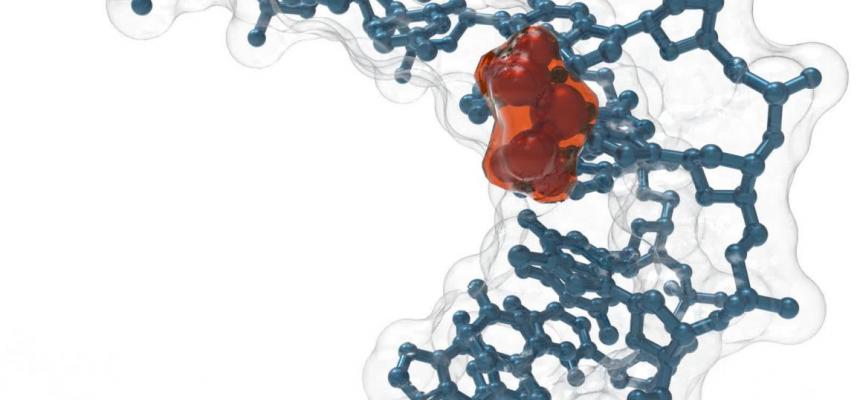A molecule model of the anticancer drug cis-Platinum intercalated between the bases of DNA
DIA's MolBNL@UniTS group on NATURE with an international project in collaboration with KAUST
The molecule at the base of life, or DNA, is subject to continuous interactions with myriads of compounds (called interlayers) that, inserting themselves between the pairs of bases that form the famous double helix, induce both direct and indirect changes to its structure. This, in turn, is reflected in the fundamental properties and functions that DNA exerts at the cellular level.
The understanding of the mechanism behind the change in the structural, mechanical and biological properties of DNA induced by the presence of interlayers of different nature is the subject of scientific work that researchers at the Molecular Biology and Nanotechnology Laboratory (MolBNL@UniTS) - Erik Laurini, Domenico Marson and Sabrina Pricl - have just published, along with colleagues from KAUST and the Polytechnic of Turin, in the prestigious journal Nature Communications.
The results presented in the work have two immediate practical values in the crucial areas of nanomedicine and the environment. In particular, through the techniques developed during this research it will be possible to carry out studies aimed at the optimized and personalized administration of chemotherapy drugs in the oncological field as well as environmental epidemiological investigations related to the effects caused by the presence of heavy metals in the DNA of both plant and animal species.
The research published in Nature Communications is one of the main topics of study of an internationally funded project involving researchers at MolBNL@UniTS - active at the Department of Engineering and Architecture of the University and which also includes the current Rector Maurizio Fermeglia - and King Abdullah University of Science and Technology (KAUST), in Saudi Arabia. This project is the first ever to sanction the collaboration between the two universities, as strongly advocated by the Magnificent Rector in the context of UniTS' internationalisation awarding perspective.
Nanomechanical DNA resonators for sensing and structural analysis of DNA-ligand complexes
Stefano Stassi, Monica Marini, Marco Allione, Sergei Lopatin, Domenico Marson, Erik Laurini, Sabrina Pricl, Candido Fabrizio Pirri, Carlo Ricciardi, Enzo Di Fabrizio
Nature Communications volume 10, Article number: 1690 (2019), published April 12, 2019
https://www.nature.com/articles/s41467-019-09612-0#MOESM7




